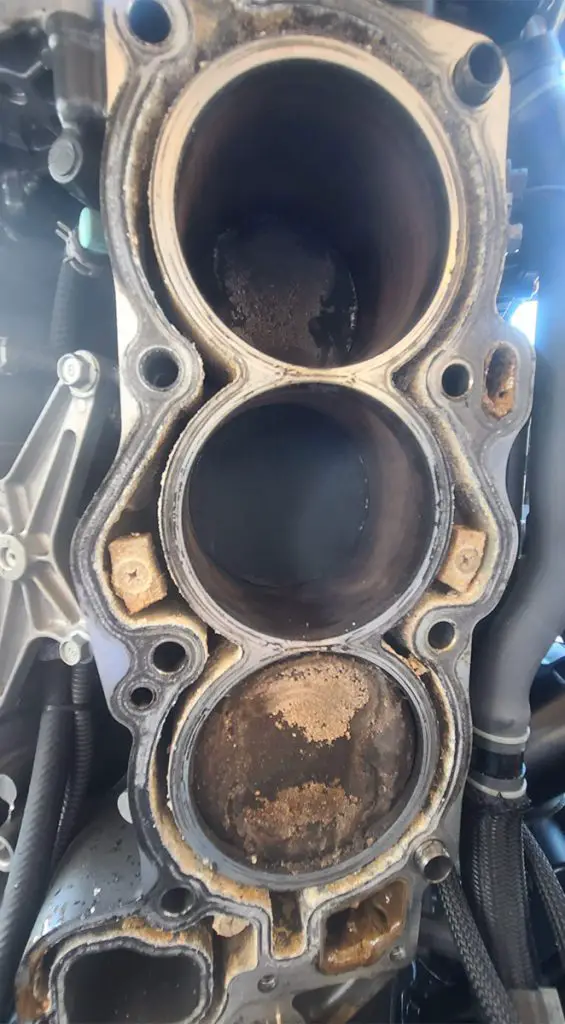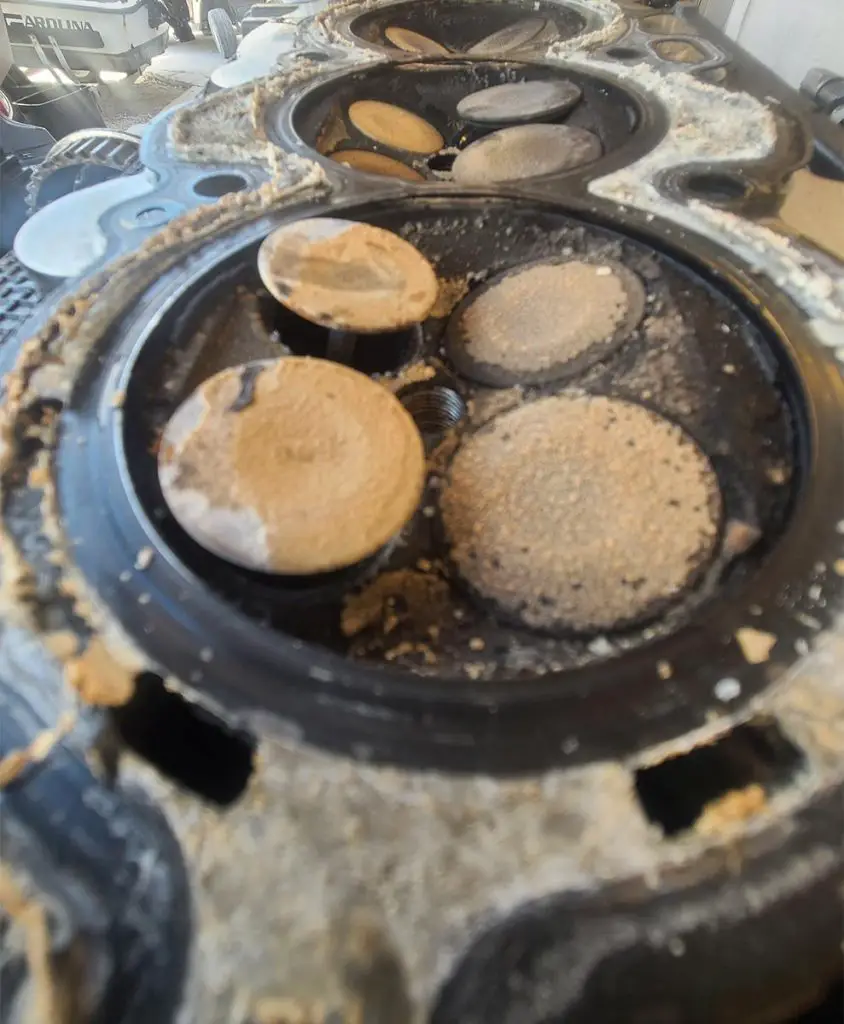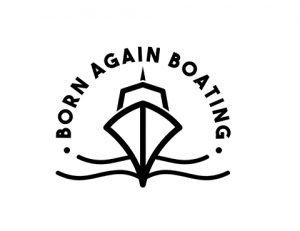Head gaskets are as old of an item on a combustion engine, as the engine itself! But if they fail, it could be catastrophic!
What Are The Signs Of A Bad Outboard Head Gasket? A bad outboard head gasket will usually result in a rough running condition, water in the engine oil, water in the cylinder, rusting plugs, rusting injectors, white smoke in the exhaust, and if not addressed a blown engine.
Here are the warning signs that you should be aware of when it comes to having a bad head gasket and what you can do about it!
How Do You I Know If My Outboard Head Gasket Is Blown?

There are actually quite a few different signs and symptoms that you will find going on with your outboard. When you have a blown head gasket.
The most obvious and best way of testing for a bad head gasket to actually know if the head gasket is blown. Is going to be to perform a compression test and a leak down test on the engine.
(You can learn all about how to perform and what the results mean of a compression test here: Everything You Need To Know About Outboard Compression Tests!)
These tests are going to show you the internal issues that are going on within the engine. Especially when talking about a head gasket failure.
But there are also going to be the signs and symptoms that you will start noticing with the engine before it gets too late for repair.
Most commonly, you are going to start seeing a little more white smoke coming out of your exhaust than you usually do. (Here’s an article that explains what all the different exhaust smoke colors mean!)
This shows you that you are starting to burn water in your engine. Then if you are servicing the engine regularly. You will also start to notice some rust on the spark plugs.
If the issue is let alone for too long though, you will eventually start to see milky oil, or basically water in your engine’s oil!
But you might be asking yourself, Can you have a blown head gasket with no symptoms?
And that answer is going to be yes, sort of. Because generally when a head gasket fails, it’s a process that happens over time.
There might not be any signs or issues until one day, boom, it just all comes to head at one time!
What Happens If Your Outboard Head Gasket Is Blown?
And if it is bad enough, the end result of a blown head gasket is going to be a catastrophic failure of your engine! (Here are your most common outboard engine failures that are catastrophic!)
Is an engine ruined if the head gasket is blown? Not necessarily, if you catch it early and you don’t have to try and push the engine through the issue.
Which will pretty much result in a catastrophic failure. Then a lot of times you can save the engine!
When you compare the cost and availability of some engine powerheads. And even the cost and availability of a completely brand new engine.
Then you are going to find that the cost and repair of fixing the engine if it is an option. Is going to be a lot cheaper than the other options would be!
How Much Does It Cost To Replace The Head Gasket On An Outboard Motor?
Depending on how bad the engine got when the head gasket failed, will determine the cost of the replacement.
If the issue is found early and there isn’t any damage done to the pistons, the block, the rings, the head, or the valves.
Then you are going to be looking at the cost of just replacing the head gasket itself. And the price of the actual part being the head gaskets aren’t really that bad.
Especially when you can get a discount on whichever one you need by using BAB Coupon codes at Partsvu!
The one thing that is going to change your cost the most is going to be the time that it takes to do the physical work or replacing the head gasket. Which will depend on what engine you have.
On most two strokes,
One head can be removed, cleaned, and reinstalled in as little as an hour! Because of the accessibility and the simple design of where the head is.
So you can replace both head gaskets in as little as 2 hours and up to around 4 hours on most 2-stroke engines.
Some four strokes will be around the same time frame, with maybe just one additional hour per side, based on how some have less accessibility.
But then there are also four strokes where the entire powerhead will need to be removed in order to pull the head to change the gasket. In these cases, you will be looking at anywhere from 4 to 8 hours in time to replace the gasket.
Which will increase your costs based on the price per hour of whoever does the job, or if you do it yourself, then factor however much your time is worth!
In one of the cost scenarios, you will need to replace the head itself, which can get up over 5,000!
And the absolute worst-case scenario is where nothing is salvageable and you will need to replace the entire powerhead.
How To Replace An Outboard 2-Stroke or 4-Stroke Head Gasket.

The actual replacement process for most two-stroke engines is fairly simple. This is because most of the heads on the engine will tell you the order of how to take out the bolts holding the head-on.
And then it will also give you the torque specs for reinstalling the head onto the engine. So the process is as simple as unplugging your ignition coils from the plugs, pulling the spark plugs, and then removing the bolts holding the head-on.
You will usually also have to remove a couple of electrical connectors to sensors, and some wire holding brackets, but then you can pull the head off the engine.
Once you have the head off, you will want to take a rubber-tipped bristle disk to clean off the mating surfaces on both the head and the block where the gasket goes.
Once that is cleaned up, you can use a gasket sealing compound on both sides of the gasket and then reinstall the head. Torque your bolts and finishing putting the engine back together!
The process is really not as bad as it may sound and can be done with a basic set of mechanical tools.
On a four-stroke engine though, it will depend on the model that you are working on. For many of these engines, the process is pretty much the same as the two-stroke.
But on the other models where you have to pull the powerhead. The process is going to be a little more involved than the simple steps we’ve laid out here.
For this process, it will follow the similar steps, but add the step of derigging and pulling the powerhead. So it’s best to refer to the service manual procedure here.
And really it is going to be best to follow the service manual for replacing a head gasket. Regardless of what engine you are working on.
Though if you are mechanical and have some nuts and bolts wrench time under your belt. You will be able to figure it out and get the gasket replaced without issue.
Another important note here is that since you are pulling the head. When you do it, it’s not a bad idea to go ahead and pull the water jacket from the head.
And clean out the inside water passages while you have everything open. As well as replacing the anodes that can be found in the head and the water jacket.
So think about this when you order your parts!
Problems After Head Gasket Replacement.
The last thing that anyone wants to deal with after performing any significant job like this. Is to have to deal with some problems after the fact!
Which is not uncommon, but generally, as long as you made sure that the surfaces were clean. And that there wasn’t an internal issue with the engine.
Like the pistons, rings, valves, or any other mechanical issues that could arise from a blown head gasket. As long as all the internals were good.
You won’t be dealing with any significant problems after replacing the head gasket.
The problems that you will usually be dealing with. Will be unrelated to the actual gasket replacement.
Usually, the problems that arise after the replacement are issues where you didn’t hook something up.
Like a sensor, an ignition coil, maybe you unplugged the fuel pump. Usually, it has something to do with a step that you missed when reassembling everything after the gasket replacement.
Which are most of the time, small problems that you just have to figure out what it is that you missed when you put everything back together!
Check Us Out!
We hope this has been helpful in giving you a better understanding of what goes on with an outboard head gasket. And the signs and symptoms of a bad one! Check us out on YouTube where we create all kinds of helpful boating videos!
If you would like to learn more about your boat and its systems, you can learn how to fix the majority of them by joining our Boating Academy Here!
You can also save some money by using our coupons when you need to buy stuff from your boat by using any of these coupons here at Partsvu!
And if you would like to support us to continue bringing you great content, please click the link below to Amazon where we get a commission from anything you are already going to buy! Click Here To Amazon!
Here are some other articles that you can find super helpful!
